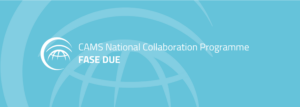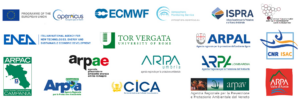Copernicus Atmosphere Monitoring Service Project – National Environmental Monitoring and Protection
The second phase of the National Collaboration Programme CAMS Italy represents an important acknowledgement of the relevant results obtained in the first phase of activities in the field of atmospheric monitoring in Italy, promoting joint development actions between different users and researchers based on, as well as favouring specific training and information activities.
Launched with the signing of the agreement between the European Centre for Medium-Range Weather Forecasts (ECMWF) and ISPRA in 2022, the initiative aims to strengthen the use of the resources made available by the Copernicus service in the continuous monitoring of atmospheric pollutants, thanks also to the extension of the partnership to include a larger number of regional agencies. In particular, national air quality modelling systems will be consolidated, also adding information on the concentration of Saharan dust over our country. Models providing daily hourly forecasts at regional and local level for various pollutants will then be tested and refined. The project will also focus on pollen monitoring, using CAMS products and nationwide data collected by POLLnet, the network monitoring the biological component of particulate matter in the atmosphere.
The approach:
The working group is headed by ISPRA and includes ENEA, CNR-ISAC, Tor Vergata University, the Italian Copernicus Academy Consortium and 8 of the 21 regional agencies: ARPAe Emilia-Romagna, ARPA Lombardia, ARPA Campania, ARPA Liguria, ARPA Piemonte, ARPA Veneto, ARPA Umbria, ARPA Valle d’Aosta. Through the National User Forum Copernicus, in particular through its Air Quality consultation table, also in the second phase technicians from the sector will be actively involved, creating an essential bridge between the CAMS Service and the end users at national level.
Main Actions at National or Regional Level
Analysis and refinement of models providing daily hourly forecasts at regional and local level for different pollutants
Estimation of the amount of Saharan dust in the atmosphere in a timely and homogeneous manner throughout the country
Detection and modelling of the presence of pollens and in particular those of the most widespread allergenic species in Mediterranean areas
Development of case studies of the use of CAMS products applied to human health
Organisation of training activities for the use of CAMS products and those generated by the project
Promotion and communication activities
For updates on the project please consult the dedicated page: https://www.copernicus-italia.it/?page_id=883


